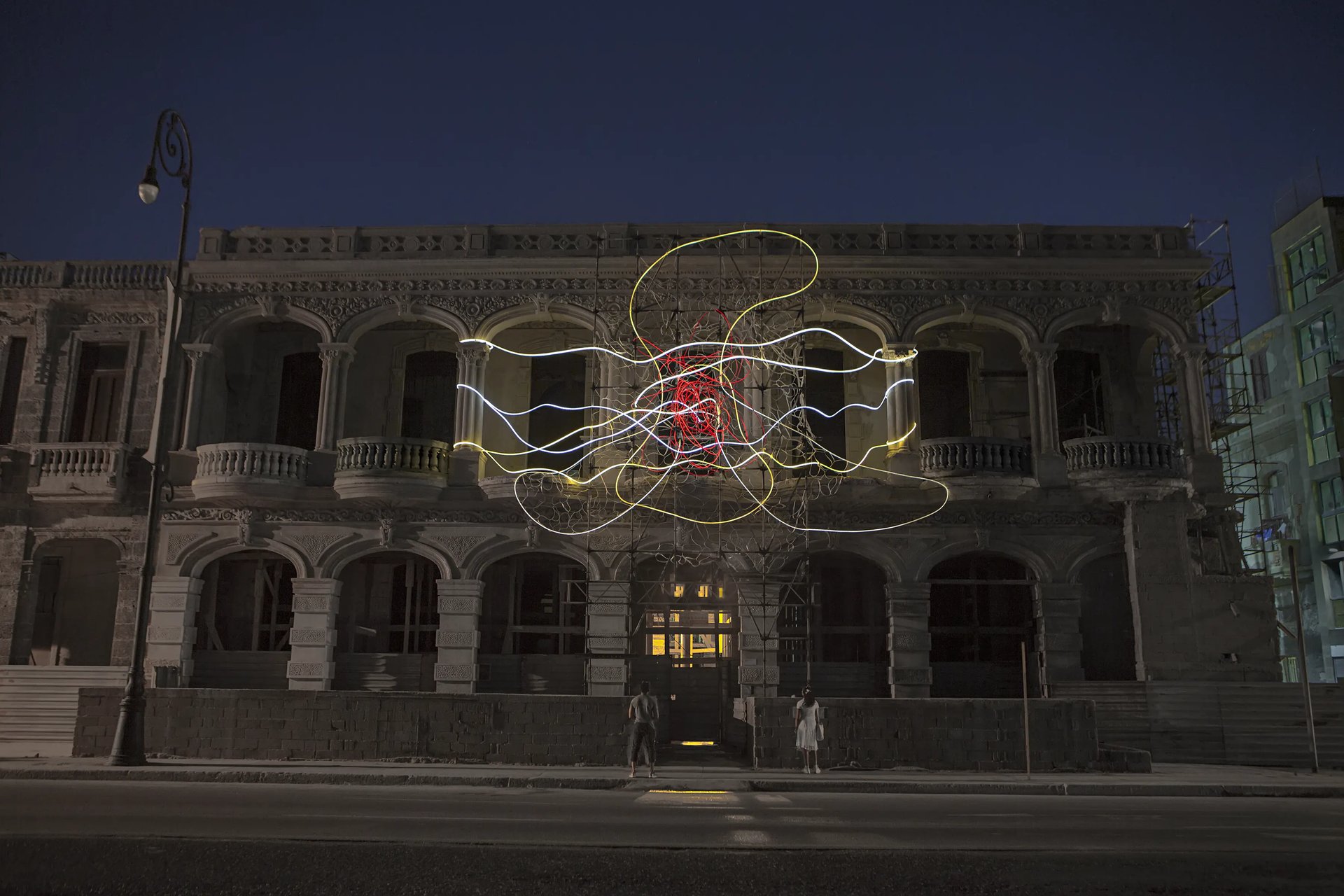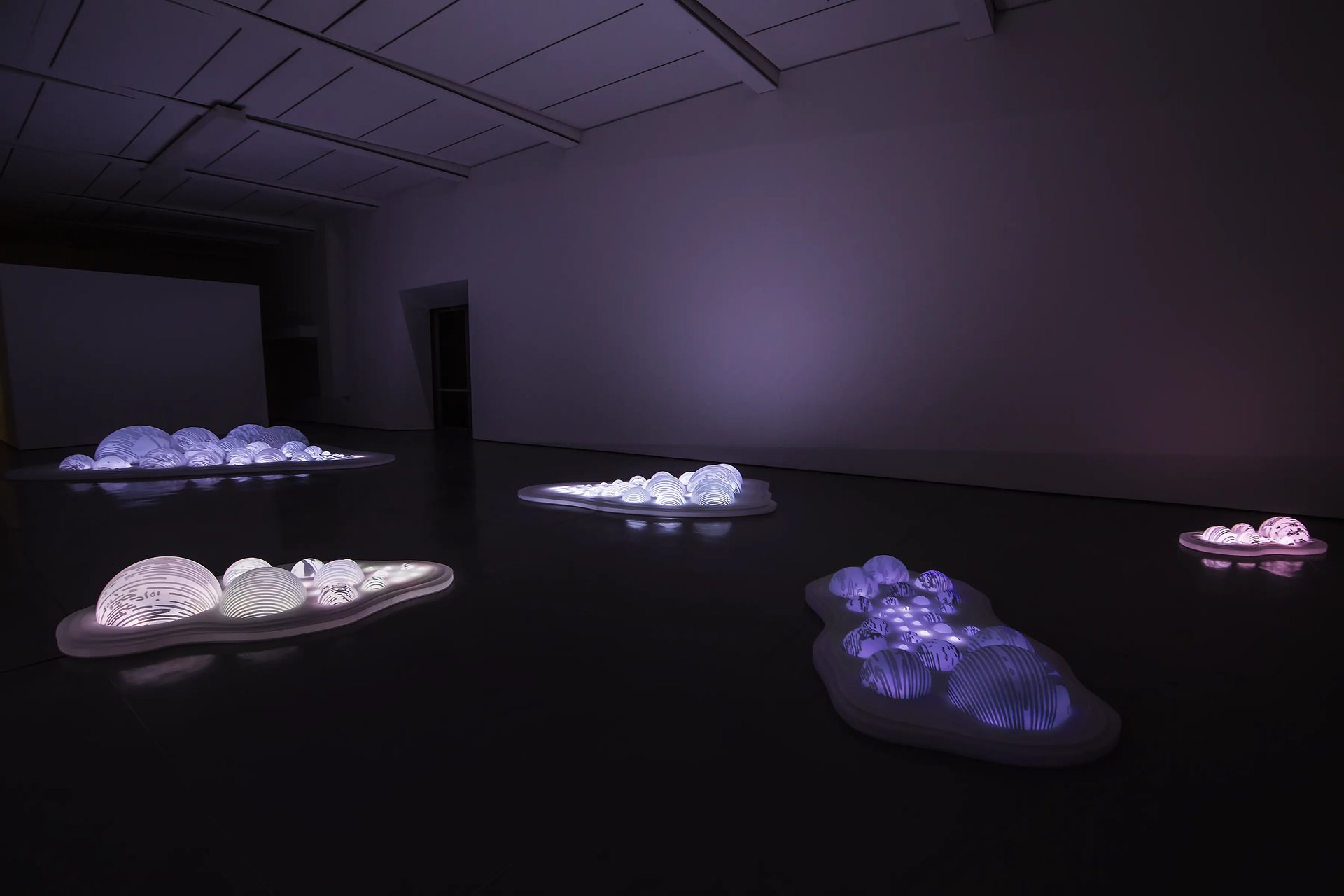13th Havana Biennial
The 13th Havana Biennial, held from April 12 to May 12, 2019, opened under the shadow of Decree 349, a censorship measure established in December 2018. Widely decried by artists and intellectuals, the decree curtails artistic independence by forbidding gatherings and exhibitions without a permit and criminalizing uses of certain content, among others. Under these circumstances, it was somewhat ironic that the theme of the biennial was “The Construction of the Possible.” Although the curatorial concept related to how to respond to contemporary global precarity under conditions of violence, social inequality, and environmental vulnerability, the theme also spoke to how to continue to operate under the latent threat posed by the Cuban regime. The biennial’s curatorial team consisted of Margarita González Lorente, Nelson Herrera Ysla, Margarita Sánchez Prieto, José Manuel Noceda Fernández, José Fernández Portal, Ibis Hernández Abascal, and Lisset Alonso Compte. The exhibitions were spread over multiple venues, the main ones being the Centro de Arte Contemporáneo Wifredo Lam, the Centro de Desarrollo de Artes Visuales, Fototeса de Cuba, Casa Oswaldo Guayasamin, Casa México, and Pabellón Cuba. Indeed, the multiple locales made the experience of visiting the biennial unwieldy. The website of the event listed forty-four exhibition spaces, not counting the collateral shows, which numbered 133 on the official map. In all, it was next to impossible for any visitor to view the entire biennial in Havana. In addition, the cities of Matanzas, Cienfuegos, Sancti Spiritus, and Camagüey also featured parallel exhibitions as part of the program.
The point of departure for the biennial was the Centro Lam. Here, visitors were treated to a tightly curated selection of works-an auspicious beginning. In the courtyard, Alexia Miranda’s Tejido colectivo (Collective Weave, 2013-19) welcomed the spectator. These cylindrical weavings in whitecotton hung suspended from hoops, forming multiple intricate patterns as three-dimensional sculptures by Pompidou’s curator Ilaria Conti, “By shifting between macro-and micro-scale, the artist has induced a glitch in our expectations, allowing us to observe the pre-constructed forms of interpretation that guide our thinking.”

Closer to the center of the action, Detrás del Muro (Behind the Wall), a public art exhibition around Havana’s iconic Malecón seaside boulevard, held its third edition. Curated by Juan Delgado Calzadilla, the event included thirty Cuban artists and fourteen international ones. Some of the artists were repeated attendees, including Carlos Martiel and Arlés del Río, and Cuban-Americans Emilio Pérez, Antonia Wright, and Enrique Martinez Celaya. International artists included Grimanesa Amorós, with a striking neon light sculpture on the façade of a building, and José Dávila, with large rocks resting on concrete slabs. William Córdova, who presented a concrete pyramidal structure composed of blocks which were casts of boomboxes, and Marcos Lutyens, with a textured walkway, meant to be experienced while blindfolded to activate the sense of touch through the feet, were also featured. Overall, the presentation of this outdoor work created communal spaces and engaged inhabitants and visitors of the city who would not otherwise visit the biennial’s exhibitions. It was the most central and visible of all.
